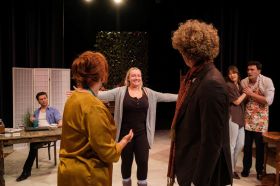The ‘creative communities’ label entered public discourse in a major way in 2002 following the publication of Richard Florida’s book The Rise of the Creative Class. However, there is more than one way to define a creative community, yet a look at some applications of the term reveals a linear thought process when it comes to understanding people’s place in pre-industrial society.
It has been excessively well documented that countries and cities everywhere have responded positively to Florida’s message that creative communities are vital to attract and retain a skilled middle class – the basis for economically viable and sustainable cities – who enjoy consuming the products and experiences generated by creative types. But the same label can also be applied to another group of people: arts practitioners working with local residents to bring about social, cultural and educational benefits to local communities.




